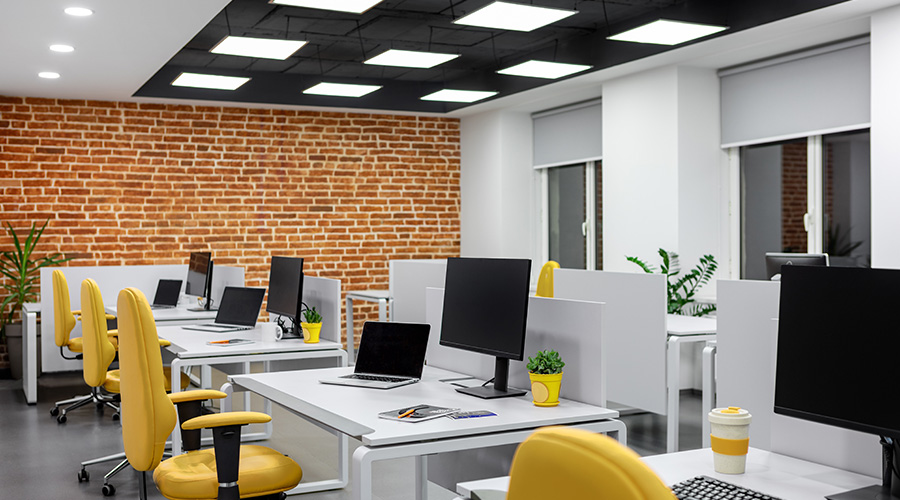Aesthetics Can Help Improve Furniture's Longevity
Of course, "the most sustainable product is the one you have," Reardon says. The longer its useful life, the less its impact on the environment.
In general, office furniture tends to be fairly durable, Laing says. As a result, office furniture is more likely to look dated long before it's truly unusable. For instance, the trend recently has been to greater use of white, along with brighter colors, and perhaps a few pieces in a stronger color, Laing says. "No one wants a sea of grey," he says. Each organization is different, he says, so that makes it tough to generalize.
Choosing furniture that can be easily updated with a new covering can extend the length of time the furniture is used, Reardon says. That saves money and reduces the product's impact on the environment.
This is key because the trends influencing furniture today are likely to change. "These things are constantly changing: management styles and work trends," Reardon says. For instance, while many companies are moving to a heavier emphasis on collaborative work environments, most employees need some amount of privacy in order to concentrate on "heads down" work. This could prompt to a shift in office and furniture design down the road.
Still, even as workplace and design trends change, the objective of the furniture doesn't. "How does the furniture support how employees need to work?" Laing asks. Ultimately, the answer to that question should be the most critical determining factor in choosing systems.
Karen Kroll, a contributing editor for Building Operating Management, is a freelance writer who has written extensively about real estate and facility issues.
Office Furniture Sales Growth
Office furniture sales are on the upswing. After dropping by more than one-fourth in 2009, following a 3.2 percent dip in 2008, the U.S. office furniture market grew by a healthy 7 percent in 2010, and an even more impressive 12.7 percent in 2011, the Business and Institutional Furniture Manufacturer's Association (BIFMA) reports. In total, the market office furniture topped $11 billion in 2011, up from $9.9 billion in 2010, BIFMA statistics show.
What's more, this growth is expected to continue, albeit at a slower pace. BIFMA expects the market to inch up .3 percent in 2012, followed by a jump of 6.6 percent in 2013.
— Karen Kroll
|
Related Topics:














